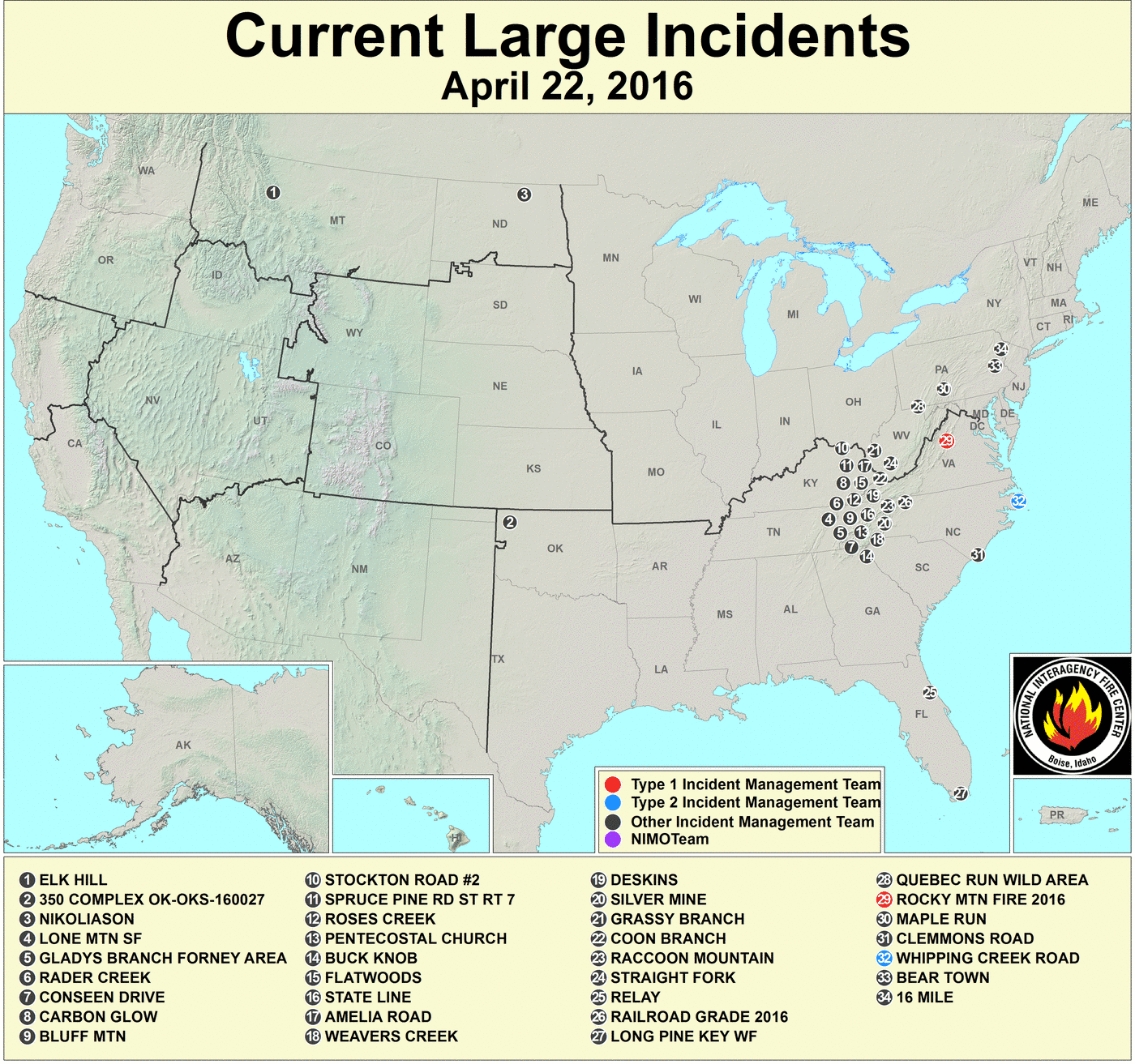On Saturday, April 16th, 2016, 200 acres caught fire in the Rocky Mountain Area of Shenandoah National Park. This fire, which started out as a small event, has burned 10,376 acres of forest in a six-day period. Fires like this one, and others which occur throughout the United States during fire season, illustrate the critical role Congress has in authorizing comprehensive fire funding legislation. Without the necessary resources, federal agencies struggle to coordinate and allocate manpower to manage these fires.
This fire is one of 30 large fires burning throughout the Eastern and Southeastern United States. According to the U.S. Fire Service Active Fire Mapping Program, of these 30 large fires, 19 have been contained. We know that fires are a part of the natural and beneficial process of forest health and development. Yet in areas where the forest is close to homes, businesses and schools, it is important that the U.S. Forest Service, National Park Service, and additional agencies be able to work to protect the people in this Wildland Urban Interface.

Overall, it is predicted that climate disruption will have an impact and make the fire season longer and more intense, affecting families, homes, and lives. Fire season begins earlier and earlier each year, and lasts longer into the fall and winter months due to changes in precipitation, higher temperatures, and the right wind conditions. Last year alone more than 10 million acres of the US forests burned due to these circumstances, and 50% of the U.S. Forest Service budget was used to manage large fires across the United States. The increasing cost of fire fighting the U.S. Forest Service to shift monies from other accounts to to cover to their fire needs. This practice is called fire borrowing, and it hinders the work of the Forest Service and other agencies that work with the Forest Service on wildfire monitoring.
The U.S. Forest Service is already in an active fire season in the East, and will likely have another active season in the West this summer as we enter into a La Nina. The time is now to find a sustainable solution to the forest fire funding problem. Right now in both the House and Senate there is a bill called the WildFire Funding Disaster Act, H.R. 167 (WDFA) and S.235 respectively. This bill would allow the U.S. Forest Service to access disaster relief funding specially designated to fight large fires. This would fix the fire borrowing. The bill has overwhelming bipartisan support in the House of Representatives as well as the U.S. Senate and would provide the budgetary support to fully address increasing fire costs while allowing the agency to fulfill its other duties of forest management, maintenance, and health.
Please call your Senator and Representative today and ask them to Co-sponsor H.R 167 and S.235 (202) 224-3121 (The U.S. Capitol Switchboard).
